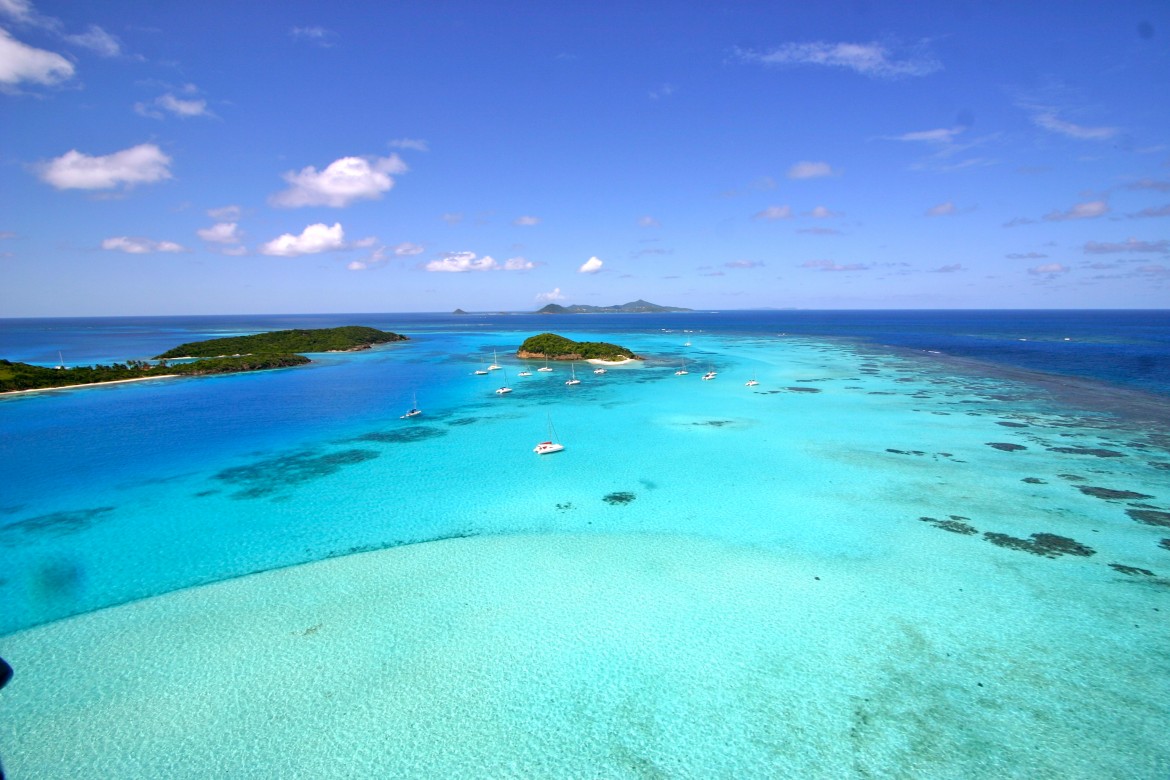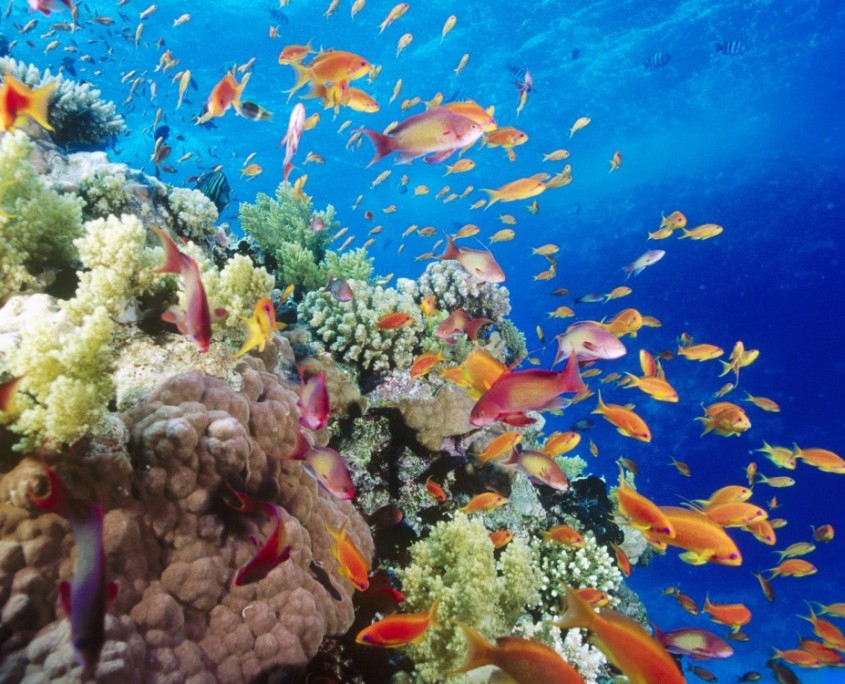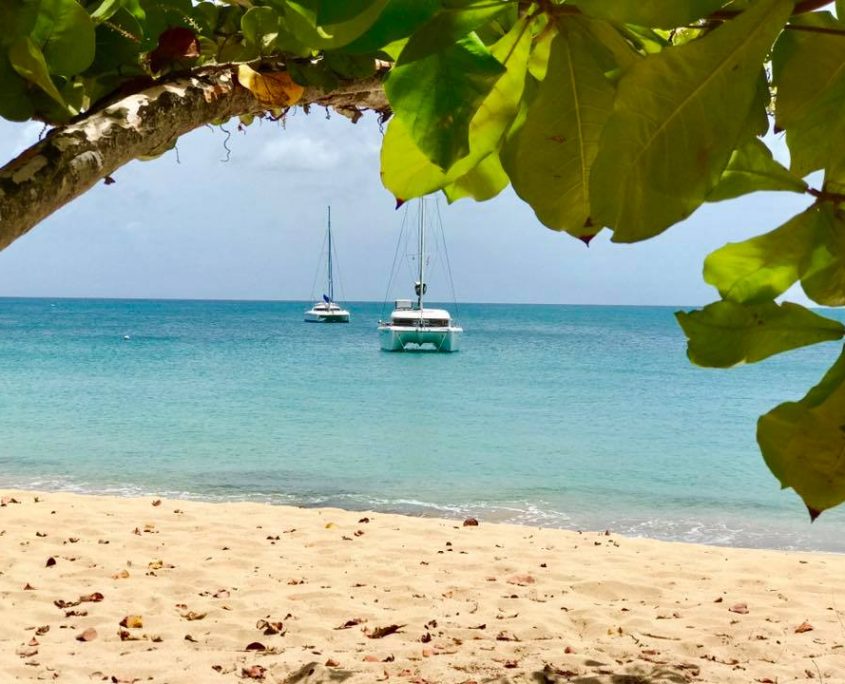On your Barefoot Yacht Charter, discover the Tobago Cays, where you will find the only natural turtle sanctuary in the Grenadines. Grab your mask and snorkel and dive into the tropical, turquoise waters.
“Sea turtles are one of the Earth’s most ancient creatures. The seven species that can be found today have been around for 110 million years, since the time of the dinosaurs. The sea turtle’s shell, or “carapace” is streamlined for swimming through the water. Unlike other turtles, sea turtles cannot retract their legs and head into their shells. Their color varies between yellow, greenish and black depending on the species” – Ocean Defenders

Turtle Facts:
- Sea Turtles feed mainly on jellyfish, seaweed, crabs, shrimp, sponges, snails, algae and mollusks.
- Much like salmon, Sea Turtles will return to the same nesting grounds at which they were born.
- When females nest, they come to the shore and dig out a nest in the ground with their back flippers. They will bury their eggs and then return to the ocean.
- A female may lay between 70-190 eggs in her nest depending on the species. When the young hatch out of their eggs, they make their way to the ocean.
- Green sea turtles can stay under water for as long as five hours even though the length of a feeding dive is usually five minutes or less. Their heart rate slows to conserve oxygen: nine minutes may elapse between heartbeats.

The Tobago Cays snorkel area is easy to navigate. Dotted along the inside of horseshoe reef you will find red or white moorings that you can use to secure your dinghy for your aquatic adventure. In your preparation, allow for current and always take a buddy with you . The best time for spotting turtles is either in the morning or late afternoon.
While on your bareboat adventure, look out for sea turtles all around. Especially on the eastern side of Baradal Island where an exclusion zone has been created. Snorkelers can share this space with the turtles.


Be cautious when approaching a resting turtle and as you enter their space. Snorkelers should not grab turtles in any way as they could drown if they are moved in the wrong direction.
Respect the turtles and their habitat and they will give you a beautiful memory to last a lifetime!
If you see a turtle yawn or open their mouth wide, it could be a trigger that they are uncomfortable with the close encounter. If they are afraid or disturbed, they may swim deep or quickly move away from you. Allow them to do so. In extreme distress, they may swipe their flippers over their forehead which is turtle talk for “flip off!”.
Turtles can swim in amazingly fast bursts.

Sadly, these beautiful reptiles are now globally threatened with extinction and you can help to protect them and enjoy their beauty all at the same time.
It is important to know that the most common and largest threats to sea turtles are human related. While chemical spills and coastal development pose a large problem for marine life, entanglement in man-made garbage and ingestion of plastic bags (mistakenly thought to be jellyfish) are serious threats that affect the turtle population on a daily basis. A large proportion of this is sadly coming from recreational activities.
What we can do to help..
Ocean Defender gives some helpful tips on how we can all help to reduce damage to Turtles and their habitats
- Reduce the Amount of Garbage You Produce, and take an extra beach bag to Clean Up Trash You See On the Beach. Sea turtles often become tangled in plastic and trash both on the shore and in the water. Discarded items such as fishing lines, balloons and plastic bags may also be confused for food and eaten by sea turtles, often resulting in injury or death.
- Be Aware of Sea Turtle Nesting Areas and Avoid Nesting and Hatching Turtles. Sea turtles are cute, and therefore tempting to touch and observe – but flashlights and people disturb turtles when they are nesting, or trying to nest, on the beach. Make sure to give nesting areas plenty of space, and do not disturb females as they emerge from the ocean looking for a place to nest. Also be conscious of where nesting areas are so that you can avoid trampling the hatchlings as they head to the water.
- Reduce the Amount of Chemicals You Use. The chemicals you use in and around your boat may be discharged into the sea – killing plants and animals. It is very important to properly dispose of toxic chemicals and, even better, reduce the number of chemicals you use or find alternative products such as biodegradable solutions will help to save the turtles!
- There are countless ways in which you can make a positive difference in the lives of sea turtles. Organize a clean-up day with your friends and clear the beach of litter, give a presentation to your neighborhood or local school on things they can do to save sea turtles, and most importantly, talk to others about what they can do to make sure they are not putting these important creatures in danger.
If you see something floating in the water, jump into your dinghy and pick it up. You will most likely be saving a turtle’s life. Enjoy your turtle time in the Tobago Cays and creating magical moments with these beautiful, treasured reptiles.
“There are sea turtles everywhere, foraging right below our feet, peaceful but fearless. Nothing about them appears passive, so thick skinned and strong. I want to be like that, wise, peaceful and perfectly equipped to deal with anything. ” Michael J. Fox











